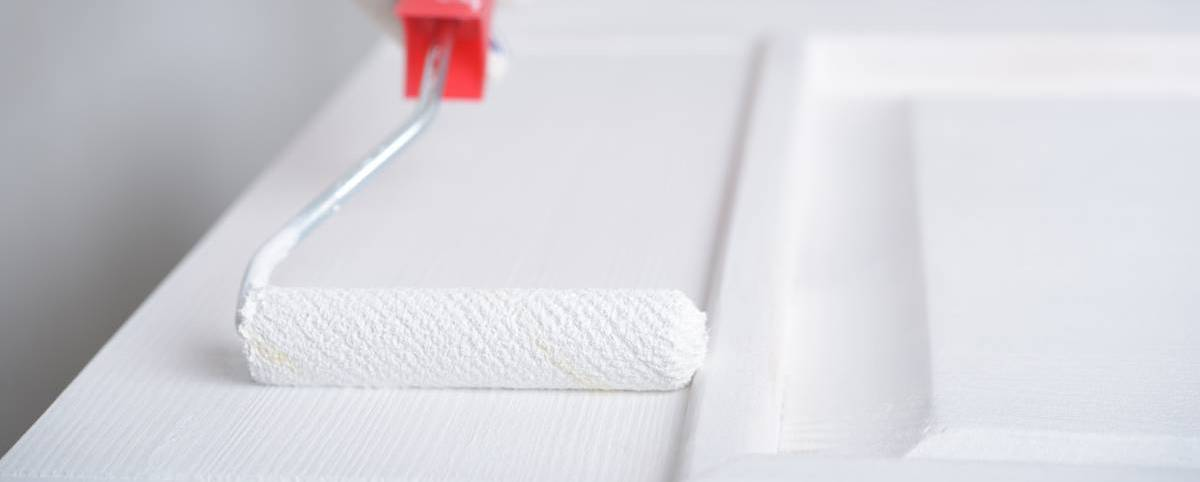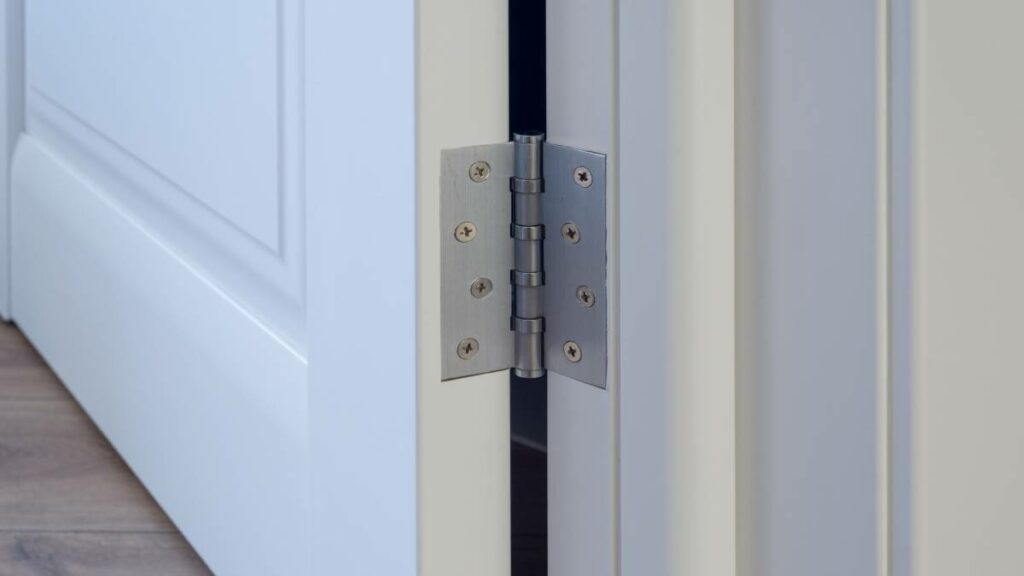
Find a local painter
- Inspiration /
- Indoor projects /
- Doors & windows /
- Transform your doors...
Transform your doors with these door painting hacks
Door painting hacks and tips that will make the task easier
Whether you’re gearing up for a full-blown home renovation or simply looking to spruce up your living space, painting a door can work wonders for your home’s aesthetic appeal. However, it can be quite time-consuming, especially if it’s your first time giving your doors a new look.
But don’t worry, there are several ways to simplify your door painting task! Read on to learn some smart painting tips and hacks that can help minimise errors in your DIY project.
8 door painting hacks and tips for your DIY project
1. Leave the door on the hinges

When painting your door, there’s the risk of getting paint on your door’s trim, on the walls, ceilings, or floors. You don’t want this mishap, especially if you’re painting your front door.
TikTok DIY expert DIY With Emma offers a smart hack that suggests using a plastic folder to keep paint from going where it shouldn’t. Hold the folder along your door’s top and bottom edges while painting across them. With this painting doors and trims hack, you can leave the door on its hinges and paint the door without messing up the edges that fit into the frame.
2. Get your prep work ahead of time
Before you start your project, do some prep work in advance. Cover the hinges and remove door knobs to protect them from paint.
Once you’re done with the hinges, smooth out any lumps on the door’s surface by sanding them. Additionally, have some shims ready to ensure the door stays securely in place. Shims are handy little pieces that help fill gaps or spaces. Doing these preparations ensures a hassle-free process and favourable results when painting doors.
3. Sand and prime for a smoother paint finish
Start off with clean doors before painting to avoid dust and hair messing up your paint job and guarantee a smoother paint finish. Lightly sand the door with 220-grit sandpaper between paint layers to remove dust or drips.
Moreover, select the right type of primer and paint for the task. Satin or semi-gloss paints are great at concealing uneven areas. Meanwhile, a high-gloss paint finish gives the most shine but requires tedious preparation and takes longer to dry.
4. Use paint rollers and brushes for a specific purpose

When it comes to painting different types of doors, it’s essential to know when and how to use paint rollers and brushes. Use a roller that holds lots of paint for efficiency and if you want to achieve a smooth surface. Opt for an angle brush for those tricky edges to get precise coverage.
Remember, start with minimal paint on the roller, focus on the edges first, and then smoothly paint the rest of the door.
5. Avoid rolling in one direction only
Work in sections of about five to six square feet to avoid leaving marks on your ceiling while painting your door. Move quickly from one section to the next so the paint along the edge doesn’t dry before you can roll the adjoining area.
Don’t forget to roll each section at a right angle to your initial roller direction. It might seem like extra effort, but it will help you get that flawless finish you want on your door.
6. Double-check your chosen paint sheen
Label the paint cans to avoid mixing them up, especially if using different sheens of the same colour. The same goes for painting a two-toned front door or other doors that require different paint sheens. Such attention to detail will ensure your painting project turns out beautifully without the unnecessary hassle.
Consider the sheen if you’re wondering what type of paint for internal doors is best. Avoid high-sheen paints if you’re working on textured or rough surfaces, as they’ll highlight imperfections. If you opt for a semi-gloss or gloss sheen, ensure your surface is smooth and well-prepared.
7. Prevent paint drips with a drop cloth or rosin paper

Paint drips are common when painting vertically, especially when painting glass panels on doors, since it’s more difficult for the paint to adhere to the surface.
To quickly solve this problem, lay down a drop cloth or some rosin paper. It’s like giving your painting project a landing pad for any paint drops. This trick will save you from unwanted mess and make the painting task more efficient.
8. Consider weather conditions when painting
When painting an exterior door or any other door, consider your local climate since extreme temperatures can affect the final paint finish.
If you live in a cold area, bring latex or acrylic paint and caulk indoors before it gets too chilly, as cold weather can cause cloudy or blotchy paint results. Avoid painting when it’s freezing outside, as the paint won’t dry properly and can easily peel off.
On one side, extreme heat and humidity can also modify the paint finish, and the paint tends to dry rapidly, leading to uneven coverage, bubbling, or peeling. As much as possible, try to plan your painting when the weather is moderate and avoid direct sunlight if you can. This way, you’ll achieve a more accurate and lasting finish.
Additional door painting tips
To help you avoid mistakes on your next paint job, here are some more helpful door painting tips:
- Choose your paint colour carefully: If possible, request a small sample from the store to test on your wall in various lighting conditions before buying a can or gallon and trying it out on your door. This way, you can ensure it’s the right shade for your space, saving you from extra trips to the paint store.
- Use a smaller painting tool for panelled doors: Painting a panelled door can be tricky because of its interior details and various surfaces that can highlight imperfections. As a workaround, use a small foam or synthetic brush to carefully paint the edges, switches, sockets, or other intricate areas.
- Keep your paint cans covered: Putting the paint can lid back on immediately can prevent messy accidents and keep the paint clean. It also prevents dried residue and mix-ups with similar-coloured lids.
- Ensure your work area is well-lit: Avoid painting interior surfaces in dim light, as it can result in imperfections that become visible when the room is well-lit. To ensure a smooth finish, ensure all your lights are on when painting, especially indoors.
Have fun painting your doors
Giving your doors a fresh coat of paint is one of the easiest and most affordable ways to update your home. With the simple hacks and tips above, you can confidently do the task and achieve a professional-looking finish that will last for years to come. But if you do need expert help, you can always call a professional painter to help you out!
FAQs on painting doors
What is the easiest way to paint a door?
Whether you’re painting a new door or concealing strong paint colour, you can follow these steps as a guide:
- Start by applying a primer. Don’t forget to prime any specific spots that need filling.
- Grab a good-quality paintbrush or roller to apply even coats.
- Get a plastic folder to insert along the edges to avoid painting the door frame so you don’t have to detach the door.
- Let the paint dry before applying another coat for a durable finish.
How do you paint a door smoothly and perfectly?
For a flawless door painting job, you should first clean, prep, and prime the surface. Then, choose the appropriate paint for your door and use paint rollers and brushes to avoid visible lines.
If you’re keeping the door on its hinges, paint the trim first to prevent accidental smudges on the fresh coat. Lastly, apply at least two coats of paint for an even and smooth coverage, and let the door dry overnight before installing it or adding hardware.
What is the easiest way to paint interior doors?
The simplest way to paint your interior door is by keeping it right in its frame and hanging on its hinges. Another benefit of not detaching the door before painting is that you can paint both sides simultaneously, making the job even easier.
Is it easier to paint a door with a brush or roller?
Whether to use a brush or a roller to paint your door depends on your painting experience. If you’re a pro, using a brush can make it easier. On one hand, foam rollers can help you easily get that smoother, drip-free finish.
Can I paint the door hinges?
Yes, as long as you use a specialised paint and prepare the hinges before painting them. Otherwise, you might damage the hinges, or the paint might just peel off over time.
How much will your job cost?
The Oneflare Cost Guide Centre is your one-stop shop to help you set your budget; from smaller tasks to larger projects.



